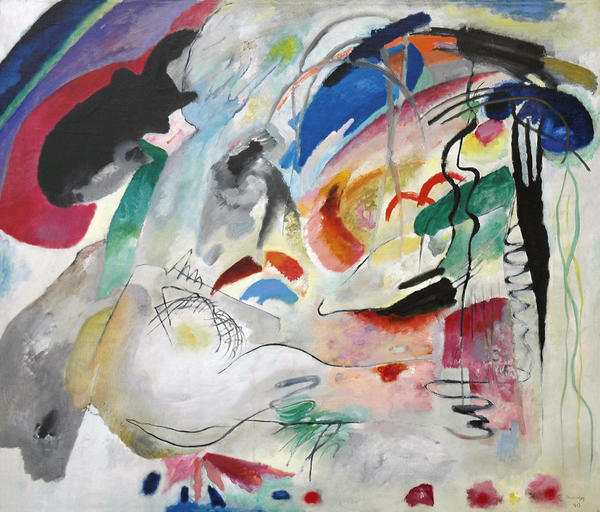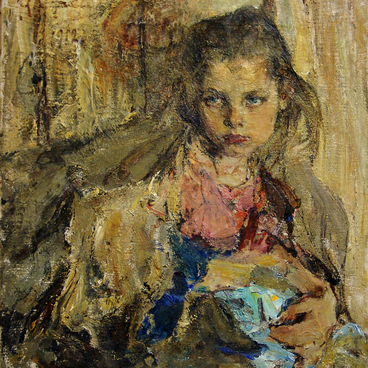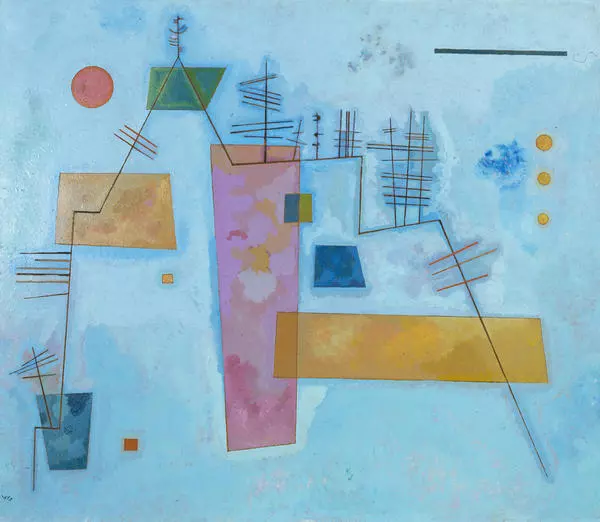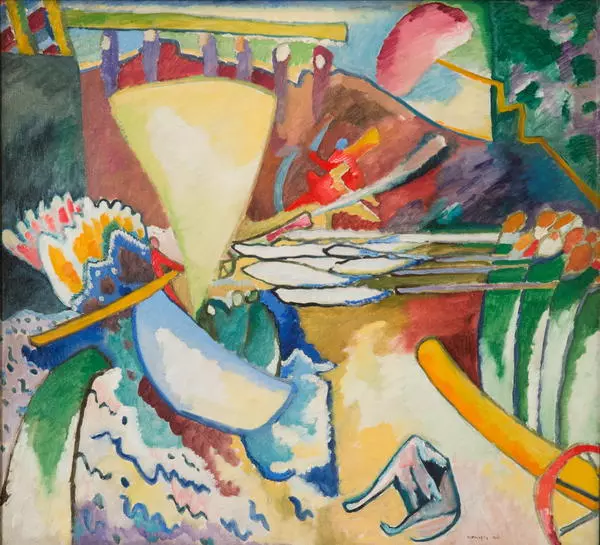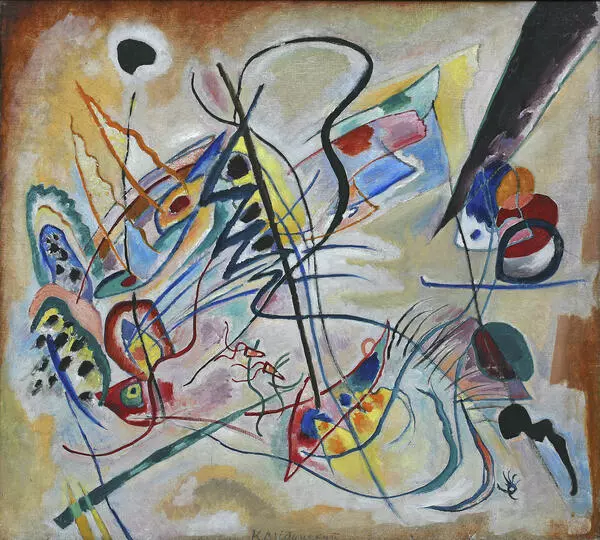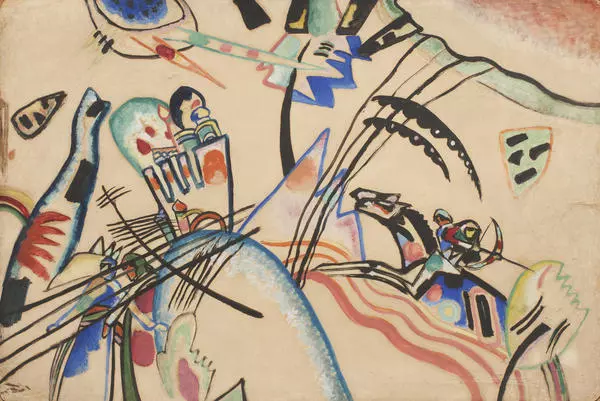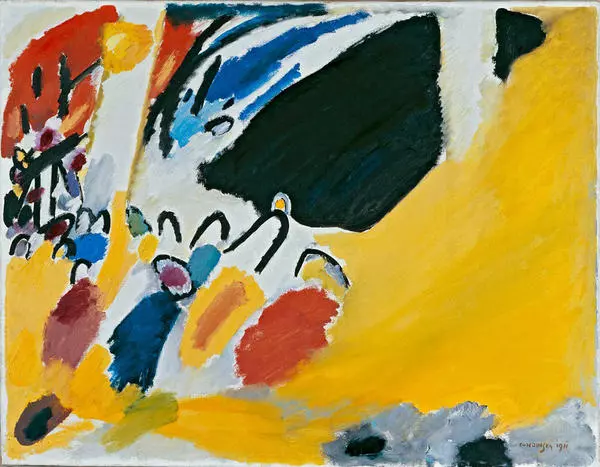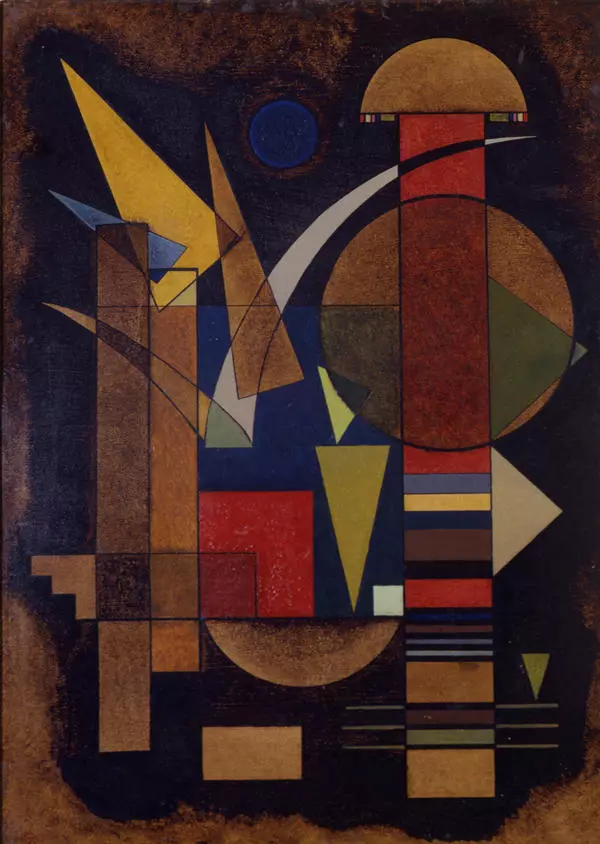Vasily (also spelled Wassily) Kandinsky, a pioneer of abstract art, was both a practical artist and a theorist who, in his works, consistently rationalized ideas that were revolutionary to art. In Retrospect, he wrote that painting to an artist is a special method of cognizing the world; moreover, it is a new world created by the artist by means of colours. Kandinsky explained that excluding representation from painting implies an ability to internally experience a purely artistic form, which requires the spectator to specifically develop in that direction.
In abstract art, he saw a method to express spirituality relieved of the material bonds, which in his opinion were associated with gross representation. He arrived at non-representational art when he had cognized the self-worth of every single art element, whether a point or a line. ‘That key to the riddle set me free and opened new worlds to me. All that was dead gave a start and throbbed – all showed me its face, its inner self, the secret soul, which is silent more often than it speaks. In this way, every dot, whether motionless or in motion (a line), too, woke to me and manifested its soul to me. That was enough to “realize” with all my being… the possibility… of art now called abstract as opposed to representational’, wrote Kandinsky.
The artist divided his abstractions into three types: иimpressions, improvisations, and compositions. Impressions are the most immediate response to the outer world. Improvisations, albeit spontaneous, too, come to express the artist’s internal processes rather than the external nature. While these two types were created mostly unconsciously, compositions were a target of Kandinsky’s conscious effort, long and elaborate, based on early sketches.
Improvisation 34 was painted in Munich in 1913. It was a most fruitful period of his life: he took part in exhibitions of the Jack of Diamonds (otherwise called the Knave of Diamonds), an avant-garde art group, wrote a famous book, On the Spiritual in Art, and co-founded, with Franz Marc, an expressionist artist, an art group called Der Blaue Reiter (The Blue Rider). In Improvisation 34 Kandinsky completes breaks away with representation and develops the drama ‘by means of pure painting, the unique capabilities of the line, spot, each individual colour and combinations thereof’, striving to express the spiritual nature in them. The lines there, like living creatures, move freely, sometimes intersecting with others, sometimes smoothly blending into colour splotches.
In abstract art, he saw a method to express spirituality relieved of the material bonds, which in his opinion were associated with gross representation. He arrived at non-representational art when he had cognized the self-worth of every single art element, whether a point or a line. ‘That key to the riddle set me free and opened new worlds to me. All that was dead gave a start and throbbed – all showed me its face, its inner self, the secret soul, which is silent more often than it speaks. In this way, every dot, whether motionless or in motion (a line), too, woke to me and manifested its soul to me. That was enough to “realize” with all my being… the possibility… of art now called abstract as opposed to representational’, wrote Kandinsky.
The artist divided his abstractions into three types: иimpressions, improvisations, and compositions. Impressions are the most immediate response to the outer world. Improvisations, albeit spontaneous, too, come to express the artist’s internal processes rather than the external nature. While these two types were created mostly unconsciously, compositions were a target of Kandinsky’s conscious effort, long and elaborate, based on early sketches.
Improvisation 34 was painted in Munich in 1913. It was a most fruitful period of his life: he took part in exhibitions of the Jack of Diamonds (otherwise called the Knave of Diamonds), an avant-garde art group, wrote a famous book, On the Spiritual in Art, and co-founded, with Franz Marc, an expressionist artist, an art group called Der Blaue Reiter (The Blue Rider). In Improvisation 34 Kandinsky completes breaks away with representation and develops the drama ‘by means of pure painting, the unique capabilities of the line, spot, each individual colour and combinations thereof’, striving to express the spiritual nature in them. The lines there, like living creatures, move freely, sometimes intersecting with others, sometimes smoothly blending into colour splotches.

